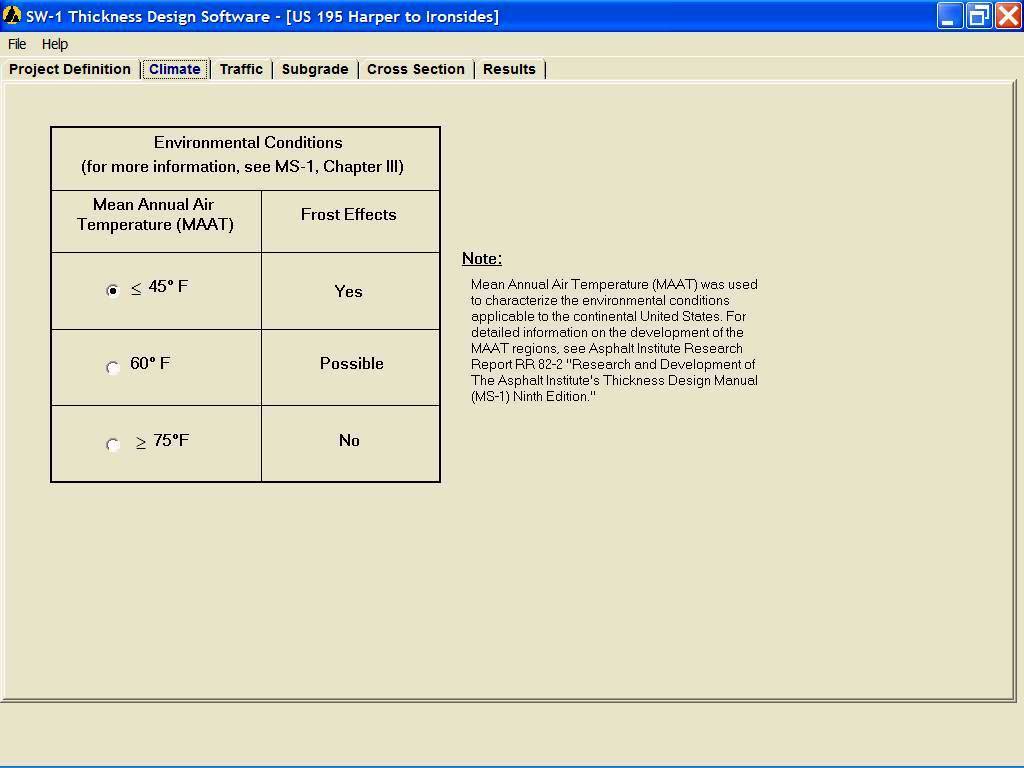

When the maximum strain is not exceeded, then the pavement will be suitable. The designer can simply read off the required maximum strain from this graph and take this back to the Boussinesq analysis spreadsheet. The spreadsheet produces design graphs which show the effects of different strains on the design loading. The CivilWeb Asphalt Institute Method Spreadsheet includes unique design tools which make the optimisation process simple. The lower of these two values can be taken as the design loading of the pavement. The spreadsheet then conducts an analysis of the proposed pavement structure against two different failure mechanisms, fatigue failure and deformation failure.

The designer must input the strains calculated by the Boussinesq analysis spreadsheet and the dynamic modulus of the proposed asphalt. Next the results from the Boussinesq analysis spreadsheet can be input into the Asphalt Institute method spreadsheet. The spreadsheet calculates the vertical and radial stresses and strains induced in the pavement by the proposed load. The Boussinesq analysis spreadsheet then completes a multi-layer elastic analysis of the proposed pavement structure using the Boussinesq method. The designer must input the layer thickness and stiffness which can be taken from experience or from onsite testing. The designer inputs a proposed pavement structure including asphalt layers, sub-base layers and a subgrade layer. The Asphalt Institute Method of Flexible Pavement Design - Inputsįirstly the designer can use the Boussinesq spreadsheet to complete an elastic analysis of the proposed pavement design. This design method is not practical to complete by hand, but these powerful spreadsheet tools allow the designer to complete a fully compliant design in minutes. Using the CivilWeb Asphalt Institute Method Spreadsheet allows the designer to complete a flexible pavement design using the Asphalt Institute design method. The spreadsheet calculates the estimated design loading which an overlay can be expected to take based on the strength of the overlay and the condition of the existing pavement. The CivilWeb Asphalt Institute Method Spreadsheet suite also includes an overlay design spreadsheet which can be used to design flexible road overlay repairs. This can then be checked against the design load required to determine whether the proposed pavement design is suitable or not. The inputs from the elastic analysis are used to complete a fatigue and deformation analysis which gives a design number of load repetitions. Next the spreadsheet suite includes a spreadsheet which follows the Asphalt Institute design method to check the suitability of the proposed pavement design.

This spreadsheet calculates the horizontal tensile strains and vertical compressive strains required as inputs in the Asphalt Institute design method. The CivilWeb Asphalt Institute Method Spreadsheet includes a spreadsheet which uses elastic theory to complete an elastic analysis of the pavement structure using the Boussinesq method. This requires a multi-layer elastic analysis of the proposed pavement structure which is a complex calculation. This is because the Asphalt Institute design method requires complex calculations of the horizontal strains induced in the pavement system under load. The structural design of flexible pavements according to the Asphalt Institute Design Method is not practical to complete by hand.

The Asphalt Institute Design Method for Flexible Pavements


 0 kommentar(er)
0 kommentar(er)
